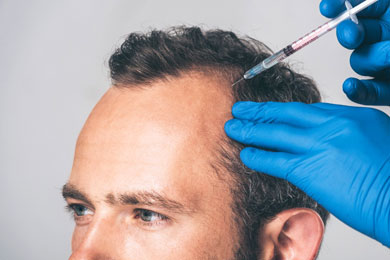
Scars are a natural part of the body’s healing process after injuries or surgeries, but chronic scars can cause aesthetic and psychological concerns. Fat-derived stem cell therapy offers a revolutionary solution for treating chronic scars, providing hope for those seeking to reduce the appearance of long-lasting scars. How does stem cell therapy work for scar treatment, and who is it suitable for? This comprehensive guide will answer all your questions, supported by scientific evidence.
Stem cells, derived from fat tissue, are cells capable of accelerating cellular regeneration. Known as Stromal Vascular Fraction (SVF),these cells are rich in growth factors and regenerative properties. In chronic scar treatment, stem cells are injected into the damaged tissue to support the reconstruction of the skin and reduce the appearance of scars.
When injected into scar tissue, stem cells interact with surrounding healthy cells, promoting tissue regeneration. Their growth factors accelerate tissue repair and regulate collagen production, making the skin more elastic and reducing the appearance of scars.
A study published in Stem Cells Translational Medicine reported a 60% reduction in the appearance of chronic scars, with 80% of patients expressing satisfaction with the results.
Another study in the Journal of Plastic Surgery and Hand Surgery observed that patients treated with stem cells showed more elastic and evenly healed skin.
Stem cell therapy is effective in both early intervention and for treating long-established chronic scars. The ideal time is when the scar tissue is still forming, but even years-old scars can benefit from the treatment.
Stem cell therapy can be applied months after an injury or surgery, as well as for long-standing scars. Research shows that even old scar tissue responds well to stem cell treatment, improving skin elasticity and reducing scar visibility.
Stem cell therapy is effective for treating various types of scars, including surgical scars, burn scars, acne scars, and trauma-induced scars. It can also help treat thickened scar tissue such as keloids and hypertrophic scars.
Areas of Application:
Stem cell therapy is a safe and effective option for many individuals, particularly those with long-standing scars, reduced skin elasticity, or those looking for better results after failed scar treatments.
Ideal Candidates:
Stem cell therapy’s success depends on how the cells are obtained and applied. In our practice, stem cells are extracted from the patient’s fat tissue and processed in a high-tech laboratory. Unlike simple bedside kits, our approach involves carefully analyzing the number and viability of stem cells, ensuring a personalized and qualitative treatment plan for each patient.
Steps of Application:
This personalized approach ensures that each patient receives optimized treatment tailored to their needs, resulting in higher success rates.
Numerous scientific studies have proven the effectiveness of stem cell therapy in scar treatment. Most patients experience a noticeable reduction in scar appearance and improved skin elasticity after treatment.
Key Scientific Studies:
Conclusion:
“Stem cell therapy offers a revolutionary method for scar treatment, effectively reducing the appearance of chronic scars and improving skin elasticity. Supported by scientific research, this personalized treatment provides optimal results. Learn more about how stem cell therapy can help treat your scars by visiting our website.”
 Advances in Stem Cell-Based Therapy for Hair Loss
Advances in Stem Cell-Based Therapy for Hair LossHair loss is a common problem that affects millions of people worldwide. While there are various treatments available for hair loss, such as medication, hair transplant surgery, and topical treatments, they Read More...
 How Much Do Adipose Derived Stem Cells Cost?
How Much Do Adipose Derived Stem Cells Cost?According to a report by the International Society of Hair Restoration Surgery, the cost of stem cell therapy for hair loss can range from $3,000 to $10,000 per session, with multiple sessions required for o Read More...
 Does Stem Cell Therapy Work on Hair Loss?
Does Stem Cell Therapy Work on Hair Loss?Loss of hair is a widespread problem that affects millions of individuals globally. There are numerous therapies available for hair loss, but not all of them may be beneficial for every individual. Read More...